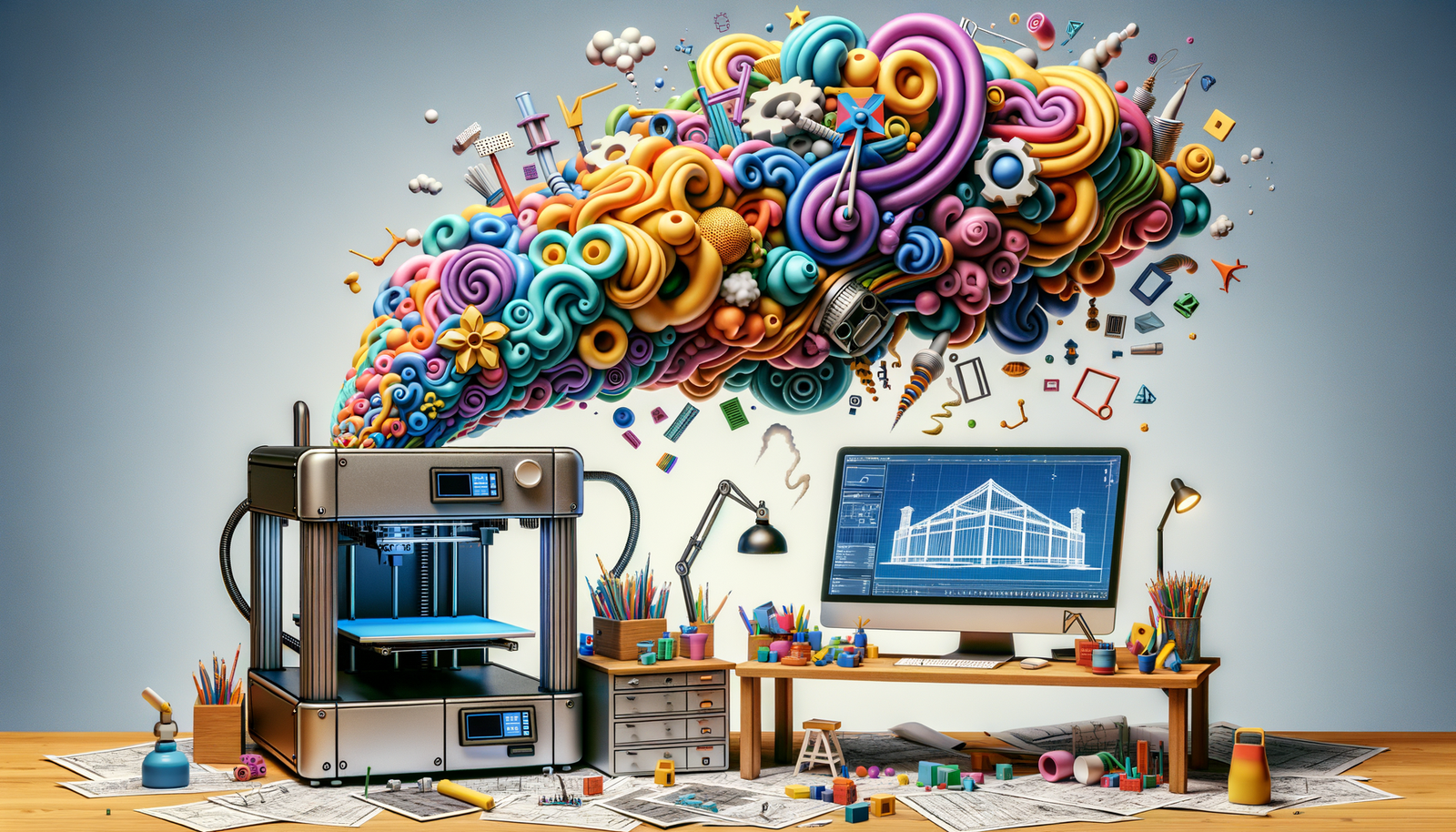Your Cart is Empty
Customer Testimonials
-
"Great customer service. The folks at Novedge were super helpful in navigating a somewhat complicated order including software upgrades and serial numbers in various stages of inactivity. They were friendly and helpful throughout the process.."
Ruben Ruckmark
"Quick & very helpful. We have been using Novedge for years and are very happy with their quick service when we need to make a purchase and excellent support resolving any issues."
Will Woodson
"Scott is the best. He reminds me about subscriptions dates, guides me in the correct direction for updates. He always responds promptly to me. He is literally the reason I continue to work with Novedge and will do so in the future."
Edward Mchugh
"Calvin Lok is “the man”. After my purchase of Sketchup 2021, he called me and provided step-by-step instructions to ease me through difficulties I was having with the setup of my new software."
Mike Borzage
Harnessing AI and IoT: Transforming Architectural Design with Advanced Software Solutions
August 26, 2024 4 min read


The Convergence of AI and IoT in Architecture
Overview
Architectural design is undergoing a revolution, driven by the integration of Artificial Intelligence (AI) and the Internet of Things (IoT). These technologies are transforming how buildings are designed, constructed, and managed, leading to more efficient and user-centric environments. Historical advancements in computational power, sensor technology, and data analytics have paved the way for this convergence, enabling architects to create smarter, more responsive buildings.
Smart Building Concepts
Smart buildings are a core manifestation of the AI and IoT integration in architecture. These buildings utilize advanced technologies to enhance energy efficiency, security, and occupant comfort. Key features include:
- Energy Efficiency: AI algorithms optimize energy consumption by predicting and managing usage patterns. IoT sensors monitor environmental conditions and adjust systems in real-time.
- Security: Advanced surveillance systems powered by AI can detect unusual activities and alert authorities. IoT devices ensure real-time monitoring and access control.
- Occupant Comfort: Smart HVAC systems adjust temperature and airflow based on occupancy data collected by IoT sensors. AI-driven lighting systems adapt to natural light levels and occupant preferences.
Case Studies
Several smart buildings worldwide exemplify the successful implementation of AI and IoT technologies. These buildings showcase the tangible benefits, such as reduced energy costs, enhanced security, and improved occupant satisfaction. By learning from these examples, architects and builders can better understand the potential and challenges of integrating these advanced technologies.
Design Software Capabilities for Smart Buildings
AI-Driven Design Tools
Modern design software leverages AI algorithms to optimize building designs, ensuring that they meet both aesthetic and functional requirements. Predictive modeling plays a crucial role, allowing architects to simulate various design scenarios and make informed decisions:
- Optimization: AI algorithms can analyze vast amounts of data to find the most efficient design solutions, balancing factors like materials, cost, and sustainability.
- Predictive Modeling: By simulating different environmental conditions and usage patterns, predictive models help architects anticipate potential issues and refine their designs accordingly.
IoT Integration in Software
Design software now integrates IoT data to provide real-time insights during the design process. This integration ensures that buildings are designed to be responsive and adaptable:
- Real-Time Data Analytics: IoT sensors collect data on various parameters like temperature, humidity, and occupancy. This data is analyzed in real-time, allowing architects to make data-driven design decisions.
- Enhanced Monitoring: Continuous monitoring of building performance through IoT integration helps in maintaining and improving building efficiency over time.
User Interfaces
Modern design software offers customizable interfaces that allow architects to manage AI and IoT features effectively. Enhanced visualization tools provide a better user experience, enabling architects to visualize the impact of their design choices:
- Customizable Interfaces: These interfaces can be tailored to the specific needs of the project, providing architects with the tools they need to manage complex AI and IoT functionalities.
- Visualization Tools: Advanced visualization tools, such as virtual and augmented reality, help architects and stakeholders understand the design and its potential impact on real-world scenarios.
Workflow and Collaboration Enhancements
Cloud-Based Solutions
Cloud platforms offer numerous benefits for smart building design, including increased accessibility, scalability, and collaboration. These platforms enable real-time editing and sharing, facilitating seamless teamwork:
- Accessibility: Cloud-based solutions allow architects and project teams to access design files from anywhere, ensuring flexibility and continuous progress.
- Real-Time Collaboration: Collaborative tools enable team members to work on the same design simultaneously, making real-time edits and updates that are instantly visible to all stakeholders.
Data-Driven Decision Making
Data from IoT devices plays a critical role in making informed design choices. AI-powered insights and recommendations further enhance the decision-making process:
- Big Data Utilization: IoT devices generate vast amounts of data that can be analyzed to gain insights into usage patterns, environmental conditions, and user preferences.
- AI-Powered Recommendations: AI algorithms process this data to provide architects with actionable insights, helping them make more informed and effective design decisions.
Interoperability
Ensuring compatibility between various design tools and IoT platforms is essential for seamless integration. Interoperability with existing building management systems (BMS) is also crucial:
- Tool Compatibility: Design software must be compatible with various IoT platforms to ensure smooth data exchange and integration.
- BMS Integration: Seamless integration with existing BMS allows for easier management and monitoring of smart buildings, ensuring that all systems work harmoniously.
Challenges and Future Directions
Security Concerns
As AI and IoT technologies become more prevalent in smart buildings, addressing cybersecurity risks is paramount. Best practices for securing design software and data include:
- Data Encryption: Encrypting sensitive data to protect it from unauthorized access.
- Regular Updates: Keeping software and systems up-to-date to mitigate vulnerabilities.
- Access Control: Implementing strict access control measures to ensure only authorized personnel can access critical systems.
Ethical Considerations
The integration of AI and IoT in smart buildings raises ethical considerations, particularly regarding privacy and the ethical use of AI:
- Privacy Issues: Balancing the benefits of smart building technologies with the need to protect occupants' privacy.
- Ethical AI Usage: Ensuring that AI algorithms are used responsibly and transparently, avoiding biases and ensuring fairness in decision-making processes.
Future Trends
Emerging technologies continue to shape the future of smart building design. Some potential trends include:
- Advanced AI Capabilities: Continued advancements in AI will lead to more sophisticated design tools, enabling even greater optimization and predictive capabilities.
- Enhanced IoT Integration: Increased connectivity and the proliferation of IoT devices will provide even more data for architects to utilize in their designs.
- Sustainable Design Focus: As sustainability becomes increasingly important, AI and IoT will play a critical role in creating eco-friendly, energy-efficient buildings.
Predictions for the next decade suggest that AI and IoT integration within architectural software will continue to evolve, driving innovation and transforming the way we design and manage buildings.
Also in Design News

RhinoArtisan: Discover the Power of Boutique by RhinoArtisan: Parametric Components
April 25, 2025 1 min read
Read More
💎 RhinoArtisan - Boutique: Design jewelry with your customer. In your store. In seconds.
April 25, 2025 1 min read
Read More
Integrating Additive Manufacturing with CAD: Revolutionizing Design and Production Workflows
April 25, 2025 7 min read
Read MoreSubscribe
Sign up to get the latest on sales, new releases and more …


